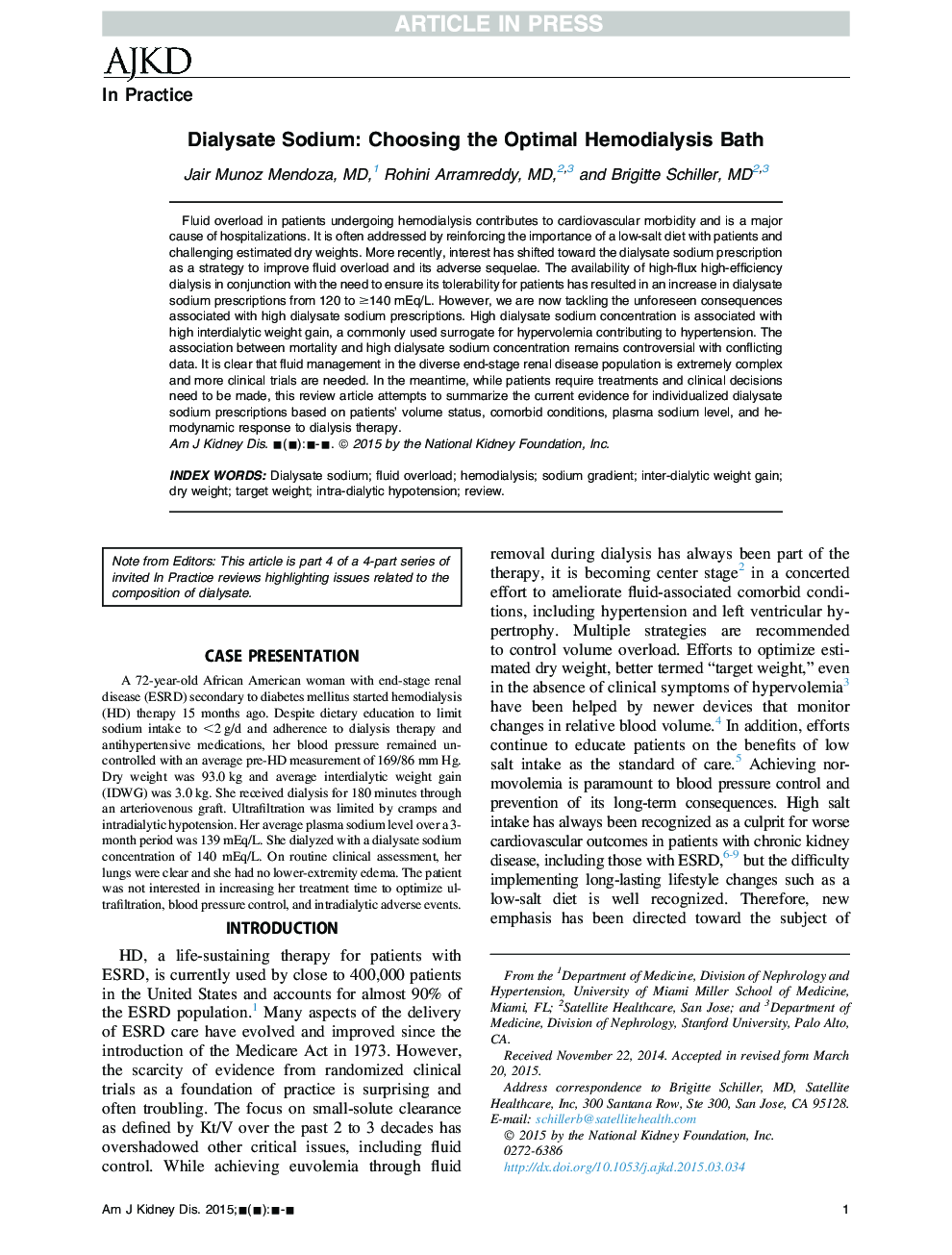| Article ID | Journal | Published Year | Pages | File Type |
|---|---|---|---|---|
| 6156487 | American Journal of Kidney Diseases | 2015 | 11 Pages |
Abstract
Fluid overload in patients undergoing hemodialysis contributes to cardiovascular morbidity and is a major cause of hospitalizations. It is often addressed by reinforcing the importance of a low-salt diet with patients and challenging estimated dry weights. More recently, interest has shifted toward the dialysate sodium prescription as a strategy to improve fluid overload and its adverse sequelae. The availability of high-flux high-efficiency dialysis in conjunction with the need to ensure its tolerability for patients has resulted in an increase in dialysate sodium prescriptions from 120 to â¥140 mEq/L. However, we are now tackling the unforeseen consequences associated with high dialysate sodium prescriptions. High dialysate sodium concentration is associated with high interdialytic weight gain, a commonly used surrogate for hypervolemia contributing to hypertension. The association between mortality and high dialysate sodium concentration remains controversial with conflicting data. It is clear that fluid management in the diverse end-stage renal disease population is extremely complex and more clinical trials are needed. In the meantime, while patients require treatments and clinical decisions need to be made, this review article attempts to summarize the current evidence for individualized dialysate sodium prescriptions based on patients' volume status, comorbid conditions, plasma sodium level, and hemodynamic response to dialysis therapy.
Related Topics
Health Sciences
Medicine and Dentistry
Nephrology
Authors
Jair MD, Rohini MD, Brigitte MD,
